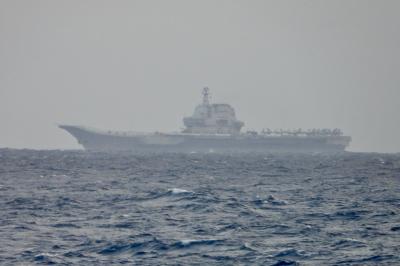The US dollar and the yen bounced higher on Friday in a flight to safety, lifted by mounting fears of a global recession that has pushed the Japanese currency to fresh highs.
The euro plunged to US$1.2623 around 9pm GMT from US$1.2926 late on Thursday in New York.
The euro plummeted against the yen to ¥118.98 from ¥125.73. The greenback slid to ¥94.24 from ¥97.27.
News of a record low in eurozone business activity and Britain on the brink of recession sent shockwaves through markets, sending investors fleeing for the shelter of the dollar and yen.
The yen often rises at times of financial turmoil as dealers unwind risky bets funded with cheap Japanese credit.
“The best word to describe what’s going on right now is panic,” Credit Suisse strategist Satoru Ogasawara said. “When you don’t know what will come next, you tend to flee to the safest place.”
The euro touched another new low against the dollar since October 2006, at US$1.2497 around 9:30am GMT. On Wednesday the euro had fallen below US$1.30 for the first time since February last year.
The euro has lost more than 20 percent of its value against the dollar since striking a record high US$1.6038 in mid-July.
The pound sank to US$1.5269, the lowest level since August 2002, after official data showed the British economy shrank by 0.5 percent in the third quarter, its lowest level since 1992, after zero growth in the second quarter.
In late New York trading, the pound plunged to US$1.5900 from US$1.6216 late on Thursday.
The dollar rose to 1.1662 Swiss francs from SF1.1589.
Asian currencies slumped this week, led by South Korea’s won and Indonesia’s rupiah, as stocks slid on concern a global recession will damp demand for the region’s exports.
The won had a sixth weekly decline as the central bank said Asia’s fourth-largest economy grew 0.6 percent last quarter, the slowest pace in four years.
The won dropped 6.3 percent this week to close at 1,424 per US dollar in Seoul, near the lowest level in a decade, according to Seoul Money Brokerage Services Ltd.
The New Taiwan dollar completed its biggest weekly loss in 10 years after a government report showed the export outlook worsened more than economists expected last month.
The currency fell for an eighth day on Friday, the longest losing streak since August, after the Ministry of Economic Affairs said export orders grew at the slowest pace in six years last month as demand from the US and China cooled.
The NT dollar slumped 2.65 percent this week to NT$33.412 against the US dollar, the biggest five-day loss since the period ended Jan. 10, 1998, according to Taipei Forex Inc. The NT dollar lost 0.4 percent on Friday.
Indonesia’s rupiah fell 4.1 percent this week to 10,225 per dollar in Jakarta, according to data compiled by Bloomberg. The rupiah touched 10,315 a dollar, the weakest since October 2005.
India’s rupee fell for an 11th week after the central bank cut the economic growth outlook for the year ending March 31 to as little as 7.5 percent from an earlier estimate of 8 percent.
The currency slid as much as 0.7 percent to 50.165 per dollar, an all-time low, before closing at 49.985 in Mumbai on Friday, data compiled by Bloomberg show.
The Philippine peso lost 1.9 percent in the week to close at 48.991 per dollar in Manila, according to the Bankers Association of the Philippines. Exports make up about 40 percent of the Philippine economy.
Elsewhere, the Thai baht fell 1.3 percent versus the US dollar this week to 34.70 and the Singapore dollar dropped 1.9 percent to S$1.5105. Vietnam’s dong weakened 1.5 percent to 16,848.

AIR SUPPORT: The Ministry of National Defense thanked the US for the delivery, adding that it was an indicator of the White House’s commitment to the Taiwan Relations Act Deputy Minister of National Defense Po Horng-huei (柏鴻輝) and Representative to the US Alexander Yui on Friday attended a delivery ceremony for the first of Taiwan’s long-awaited 66 F-16C/D Block 70 jets at a Lockheed Martin Corp factory in Greenville, South Carolina. “We are so proud to be the global home of the F-16 and to support Taiwan’s air defense capabilities,” US Representative William Timmons wrote on X, alongside a photograph of Taiwanese and US officials at the event. The F-16C/D Block 70 jets Taiwan ordered have the same capabilities as aircraft that had been upgraded to F-16Vs. The batch of Lockheed Martin

GRIDLOCK: The National Fire Agency’s Special Search and Rescue team is on standby to travel to the countries to help out with the rescue effort A powerful earthquake rocked Myanmar and neighboring Thailand yesterday, killing at least three people in Bangkok and burying dozens when a high-rise building under construction collapsed. Footage shared on social media from Myanmar’s second-largest city showed widespread destruction, raising fears that many were trapped under the rubble or killed. The magnitude 7.7 earthquake, with an epicenter near Mandalay in Myanmar, struck at midday and was followed by a strong magnitude 6.4 aftershock. The extent of death, injury and destruction — especially in Myanmar, which is embroiled in a civil war and where information is tightly controlled at the best of times —

China's military today said it began joint army, navy and rocket force exercises around Taiwan to "serve as a stern warning and powerful deterrent against Taiwanese independence," calling President William Lai (賴清德) a "parasite." The exercises come after Lai called Beijing a "foreign hostile force" last month. More than 10 Chinese military ships approached close to Taiwan's 24 nautical mile (44.4km) contiguous zone this morning and Taiwan sent its own warships to respond, two senior Taiwanese officials said. Taiwan has not yet detected any live fire by the Chinese military so far, one of the officials said. The drills took place after US Secretary

THUGGISH BEHAVIOR: Encouraging people to report independence supporters is another intimidation tactic that threatens cross-strait peace, the state department said China setting up an online system for reporting “Taiwanese independence” advocates is an “irresponsible and reprehensible” act, a US government spokesperson said on Friday. “China’s call for private individuals to report on alleged ‘persecution or suppression’ by supposed ‘Taiwan independence henchmen and accomplices’ is irresponsible and reprehensible,” an unnamed US Department of State spokesperson told the Central News Agency in an e-mail. The move is part of Beijing’s “intimidation campaign” against Taiwan and its supporters, and is “threatening free speech around the world, destabilizing the Indo-Pacific region, and deliberately eroding the cross-strait status quo,” the spokesperson said. The Chinese Communist Party’s “threats